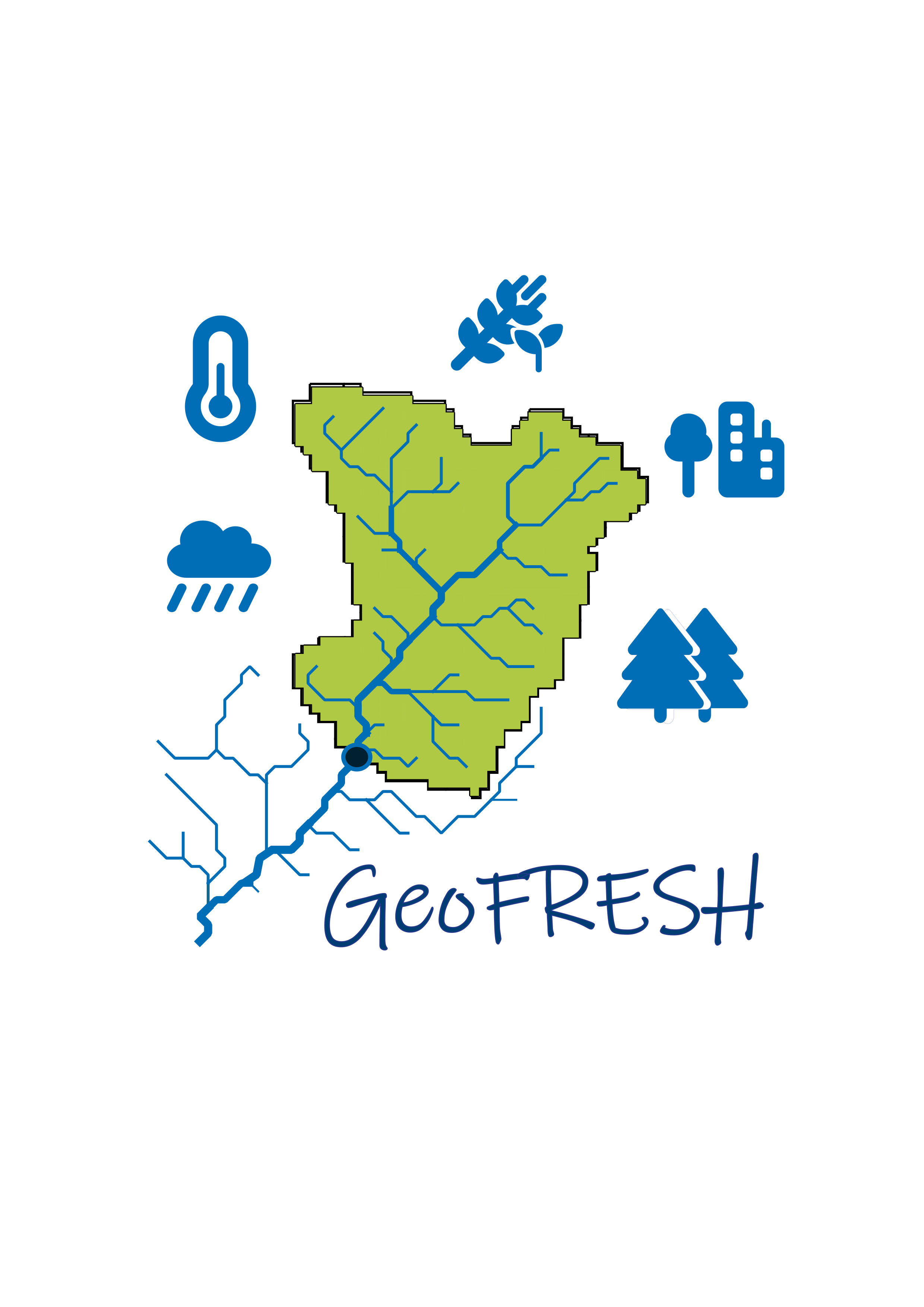The GeoFRESH online platform
Getting freshwater spatiotemporal data on track: towards the interoperability of freshwater-specific data
Spatiotemporal earth system data on freshwaters are poorly organized at present and their rich potential for research and environmental management is barely exploited. Part of this deficiency relates to the spatial structure of river networks, in particular, which requires a specialized workflow for earth system data integration and use. To address this challenge, we developed the GeoFRESH online platform, available at http://geofresh.org/. GeoFRESH provides the integration, processing, management and visualization of standardized spatiotemporal earth system data related to freshwaters on the global scale. Users can (1) upload point data; (2) automatically assign the points to a new fine-scale hydrographical network; (3) map the points to the corresponding upstream catchment; (4) annotate the points with site-specific and upstream environmental information based on a suite of 104 layers capturing topography 1, climate 2, landcover 3 and soil characteristics 4; (5) calculate network distances among points; and (6) download the compiled data ready for downstream analyses. GeoFRESH capitalizes on open-source PostgreSQL, PostGIS and pgRouting software, building on a new database comprising the global ‘Hydrography90m’ stream network at 90 m resolution 2, comprising a total of 726 million unique stream segments. The platform is readily expandable thanks to its modular structure and serves as a key element in supporting freshwater science and management relying on high-resolution geospatial analyses. GeoFRESH thus contributes significantly to FAIR data management and exchange by enabling globally standardized stream network queries and offering a powerful tool to stakeholders engaged in water research, sustainable water management and the monitoring of freshwater ecosystem services alike.

Funding statement
This work has been funded by the German Research Foundation (DFG) through the project NFDI4Earth (TA1 M1.1, DFG project no. 460036893, https://www.nfdi4earth.de/) within the German National Research Data Infrastructure (NFDI, https://www.nfdi.de/).
Resources
- GeoFRESH website
- Pilot report (Zenodo)
- Code repository (Zenodo | GitHub)
- hydrographr R-package that is planned to be linked to the platform
References
-
G. Amatulli, J. Garcia Marquez, T. Sethi, J. Kiesel, A. Grigoropoulou, M. M. Üblacker, L. Q. Shen, and S. Domisch. Hydrography90m: a new high-resolution global hydrographic dataset. Earth System Science Data, 14(10):4525–4550, 2022. URL: https://essd.copernicus.org/articles/14/4525/2022/, doi:10.5194/essd-14-4525-2022. ↩
-
Dirk Nikolaus Karger, Olaf Conrad, Jürgen Böhner, Tobias Kawohl, Holger Kreft, Rodrigo Wilber Soria-Auza, Niklaus E. Zimmermann, H. Peter Linder, and Michael Kessler. Climatologies at high resolution for the earth's land surface areas. Scientific Data, 4(1):170122, 2017. URL: https://doi.org/10.1038/sdata.2017.122, doi:10.1038/sdata.2017.122. ↩↩
-
ESA. Land Cover CCI Product User Guide Version 2: Tech. Rep. URL: https://maps.elie.ucl.ac.be/CCI/viewer/download/ESACCI-LC-Ph2-PUGv2_2.0.pdf (visited on 2023-08-17). ↩
-
Tomislav Hengl, Jorge Mendes de Jesus, Gerard B. M. Heuvelink, Maria Ruiperez Gonzalez, Milan Kilibarda, Aleksandar Blagotić, Wei Shangguan, Marvin N. Wright, Xiaoyuan Geng, Bernhard Bauer-Marschallinger, Mario Antonio Guevara, Rodrigo Vargas, Robert A. MacMillan, Niels H. Batjes, Johan G. B. Leenaars, Eloi Ribeiro, Ichsani Wheeler, Stephan Mantel, and Bas Kempen. Soilgrids250m: global gridded soil information based on machine learning. PLOS ONE, 12(2):1–40, 2017. URL: https://doi.org/10.1371/journal.pone.0169748, doi:10.1371/journal.pone.0169748. ↩